By Colwyn Campbell and Jamie Oliver
Trees are the principal structural element of rainforests, creating a variety of climates and microhabitats for numerous plants and animals. The Wet Tropics hosts a huge diversity of trees (about 920 species) with over 100 species typically found in just 1 hectare.
The main visible parts of trees in a mature rainforest are the trunks, which are not particularly different among most species. This makes tree identification difficult for the inexperienced visitor. Three of the 5 easy species listed here are among the few with highly distinctive trunks and bark. The remaining two are common along the main roads of the village where their distinctive leaves and fruit are easy to see.
1. Paperbark Satinash (Syzygium papyraceum)
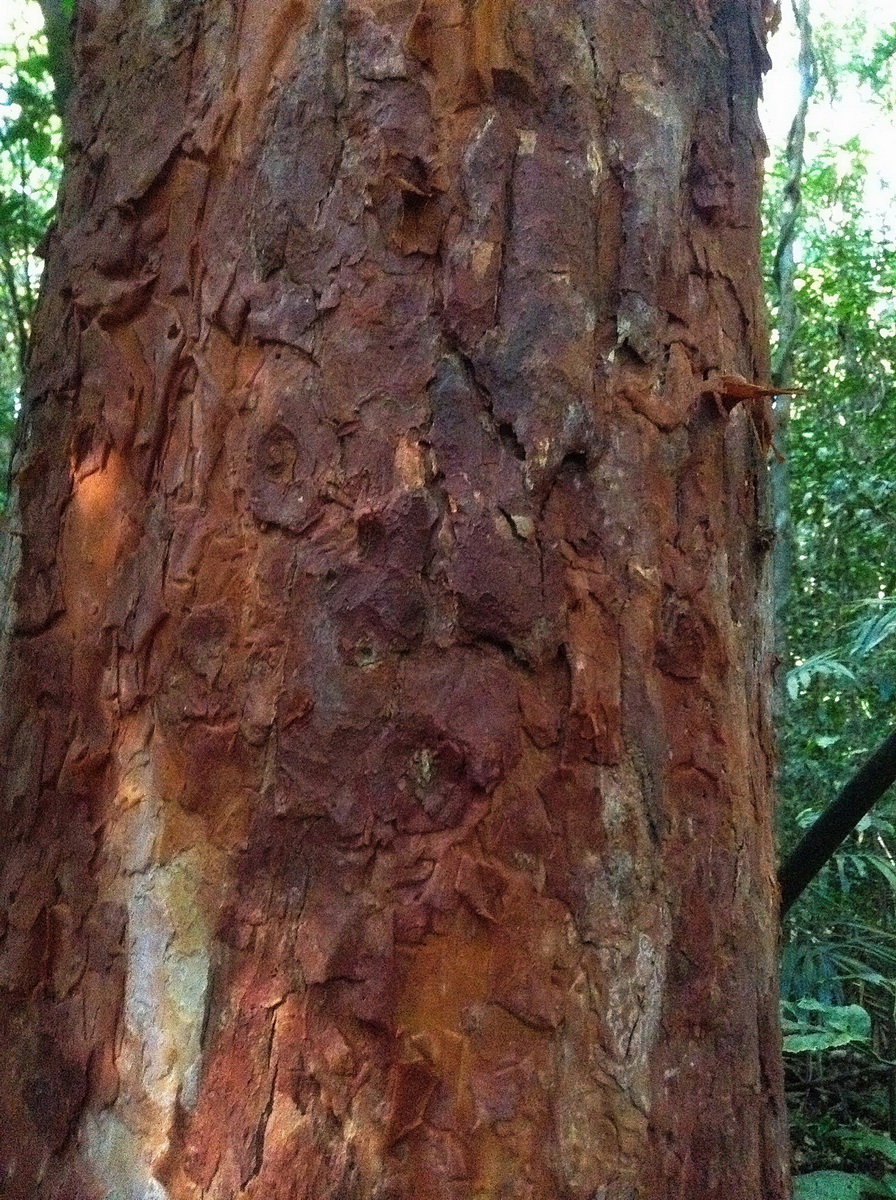
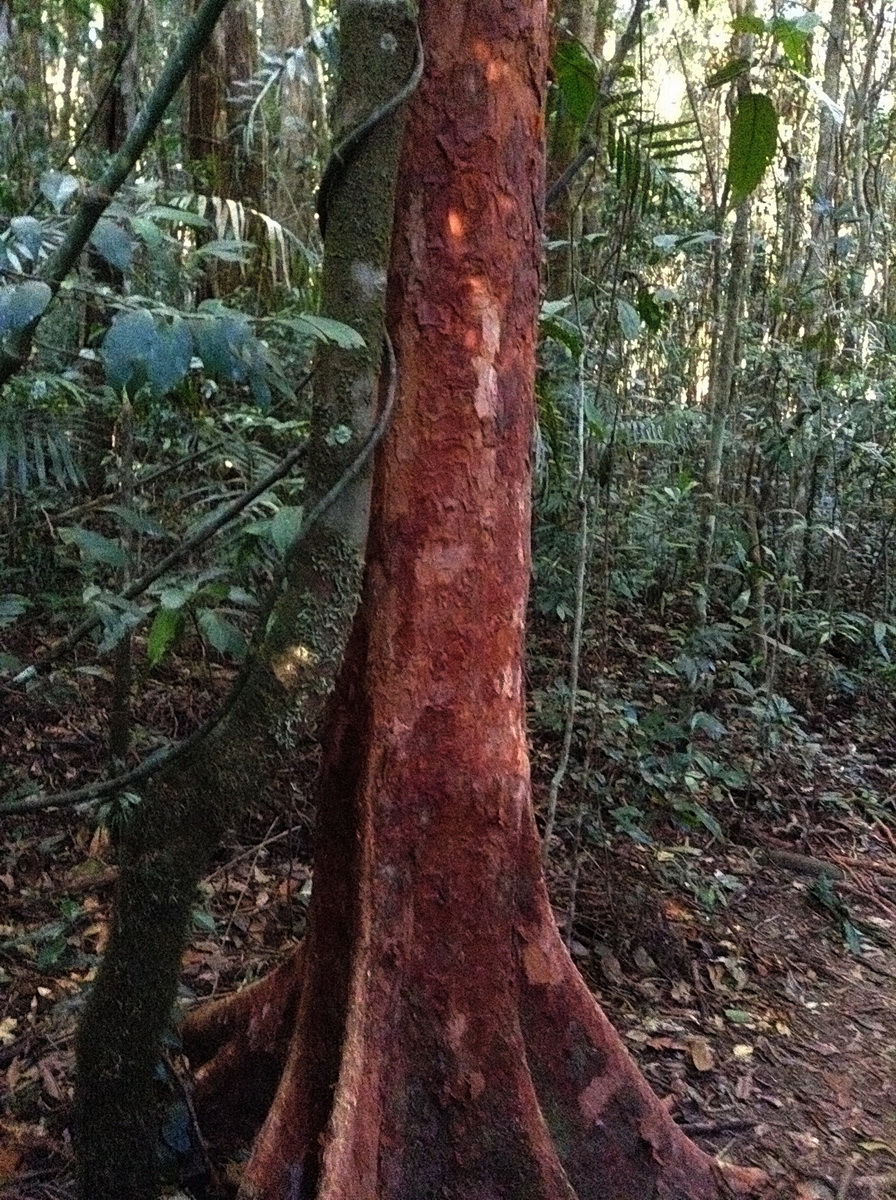
This is one of the most distinctive trees in the Paluma rainforest and is quite common, especially along the Andrée Griffin Track. It has bright orangey-brown flaky bark and roots. It grows to a height of 20 to 30 metres and often has buttresses. While the flowers are not very distinctive the bright purple fruit, which litter the ground under the tree from December to February, are readily identifiable. Leaves are glossy dark green obovate (with the narrower end towards the leaf-base).
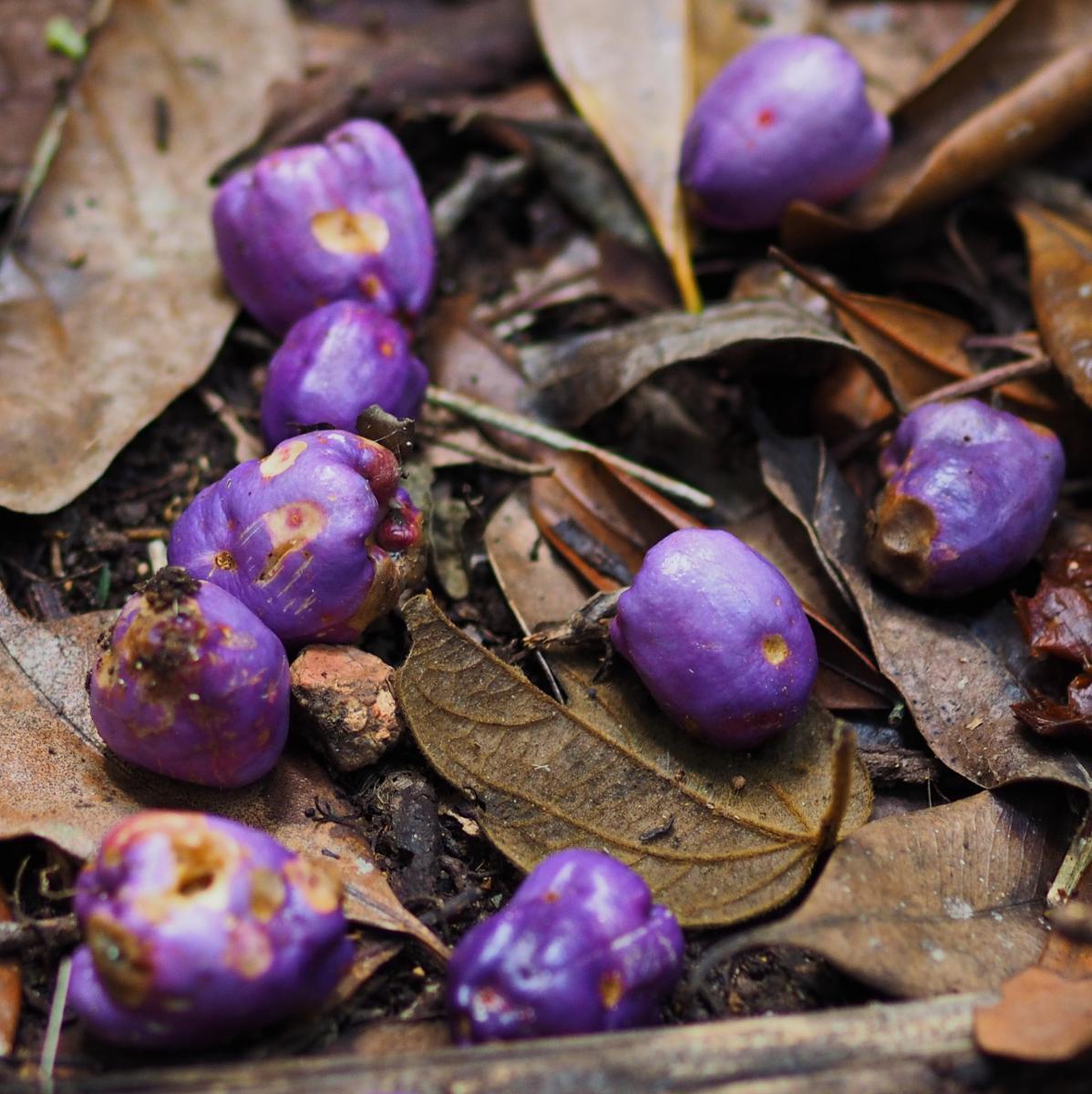
Cassowaries, Bush Rats, White-tailed Rats and Musky Rat Kangaroos eat the fruit.
For more information on this species see the Rainforest Tree of the Month (July 2018).
2. Refrigerator Tree (Gossia bidwillii)
This tree gets its name because its trunk, when compared with other surrounding trees, is very cold to touch. It is also known as the Python Tree perhaps because its mottled green and tan colouring and slightly twisting trunk resemble the marking and sinuous form of a large python. This combination of a smooth mottled bark and cold feel is what makes the tree easy to identify.
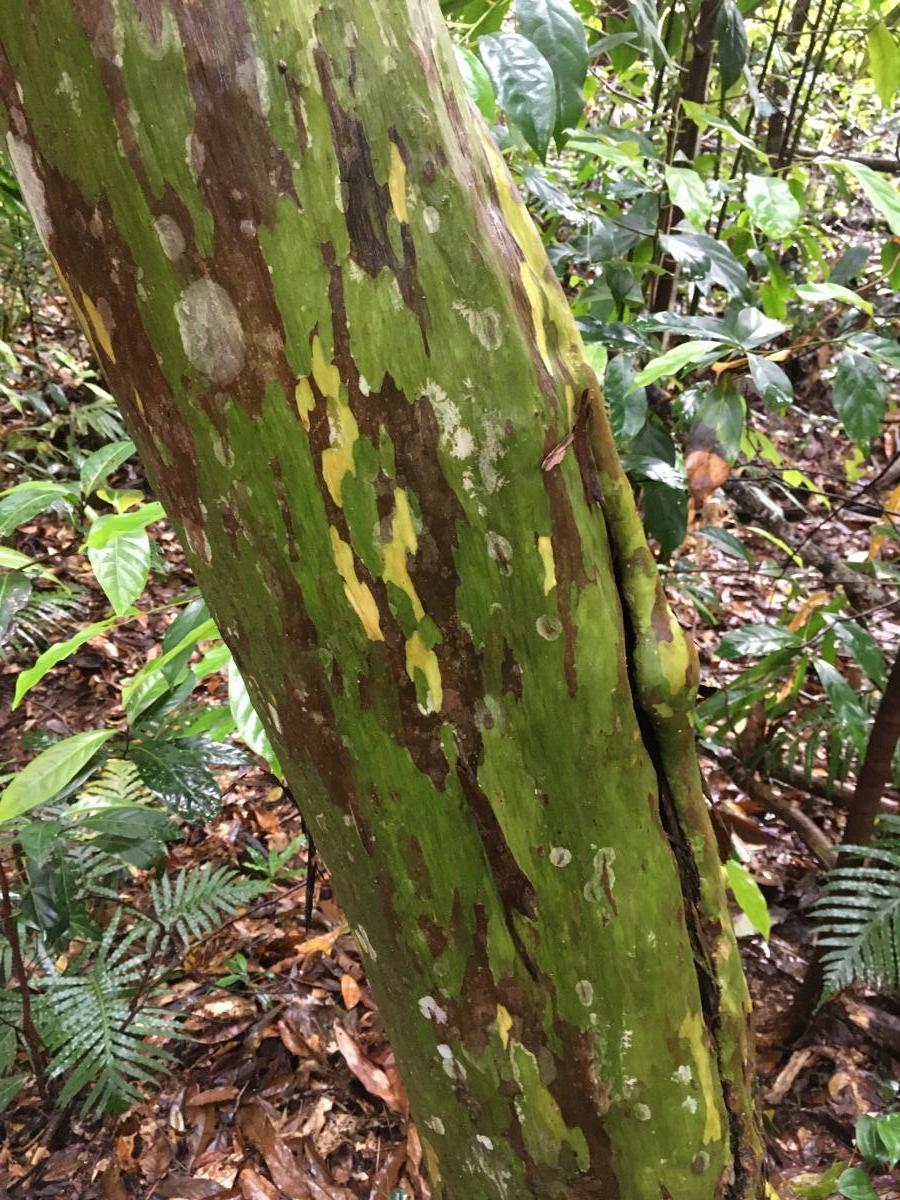
Growing to a height of about 25 metres it this tree can sometimes form buttress roots. The simple leaves are about 80 to 105 mm long and elliptical or ovate in shape. When crushed they have a slightly eucalyptus smell.
While not abundant in the forest track around Paluma, specimens can be seen on the Rainforest Track, H-Track and the main track towards Witt’s Lookout. See if you can spot them, growing among trees similar in appearance.
For more information on this species see the Rainforest Tree of the Month (May 2018).
3. ![]() Bleeding Heart (Homalanthus novo-guineensis)
Bleeding Heart (Homalanthus novo-guineensis)
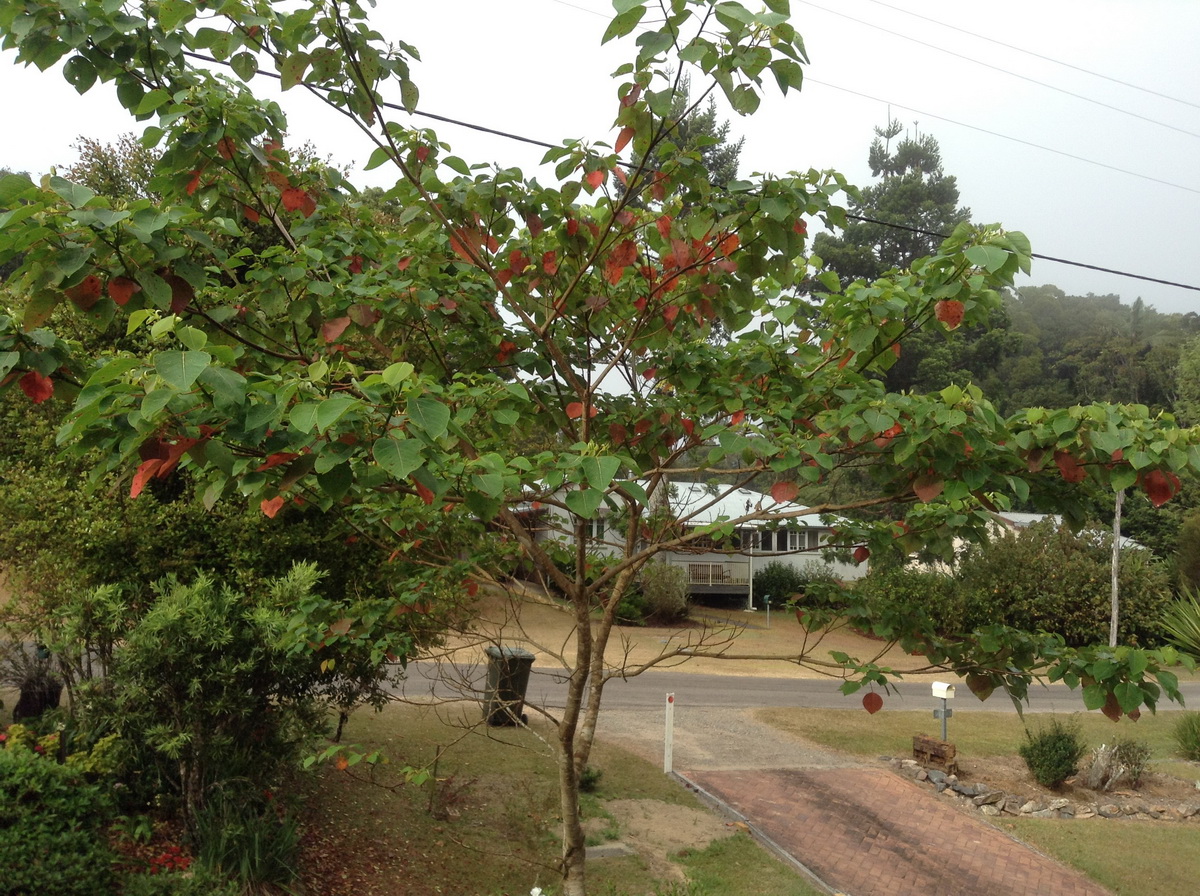
The striking feature of this tree is the scattering of brilliant red and orange heart-shaped leaves. Rather than a mass seasonal colouration change, only a few a leaves at a time turn bright red before dropping. Its leaves are simple with a smooth, glossy upper surface and a glaucous (pale) underside. The stems exude a milky sap when broken.
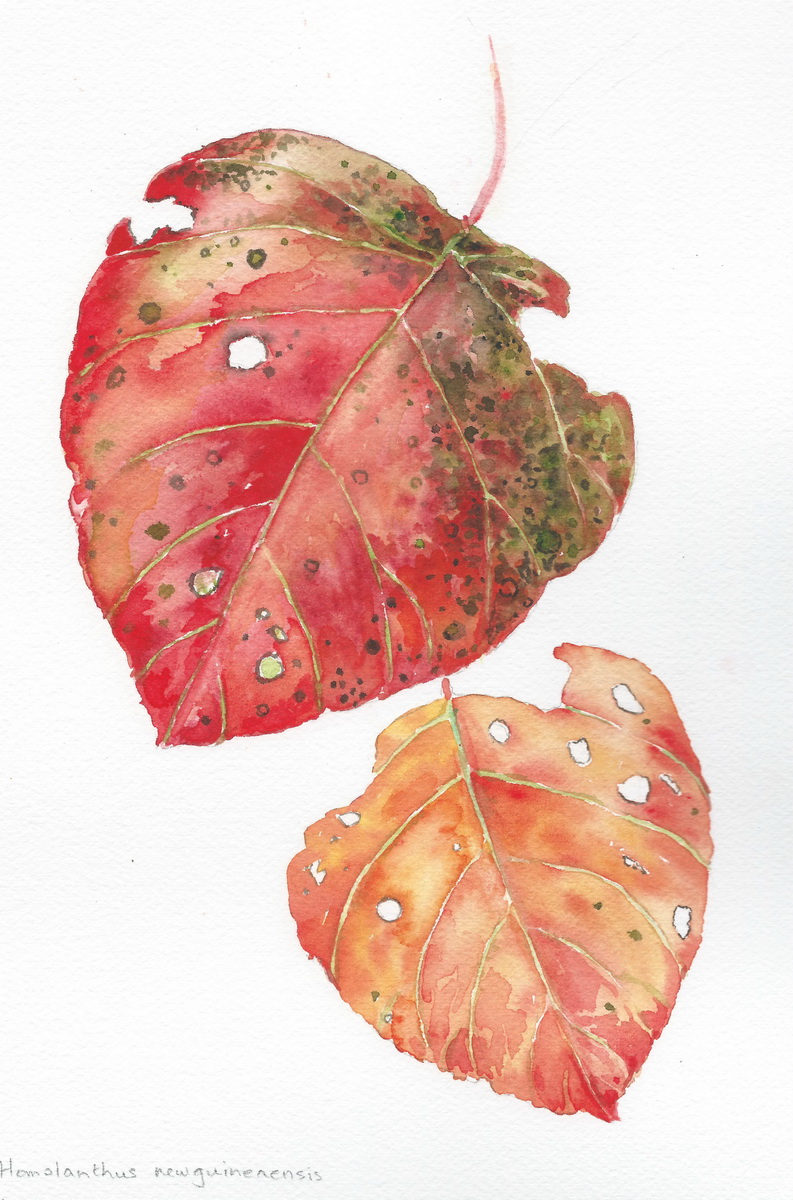
The tiny flowers are white or cream, have no petals making them difficult to detect. Flowering can occur in any month. The fruits which follow are small green to purplish. The fruit is eaten by many bird species, notably Rifle-birds, Bower-birds and Pigeons. Possums eat the leaves.
These trees are most easily seen along the roads in the village. A good example of the tree can be seen along the McClelland’s Lookout path and they are also commonly found along the village roads.
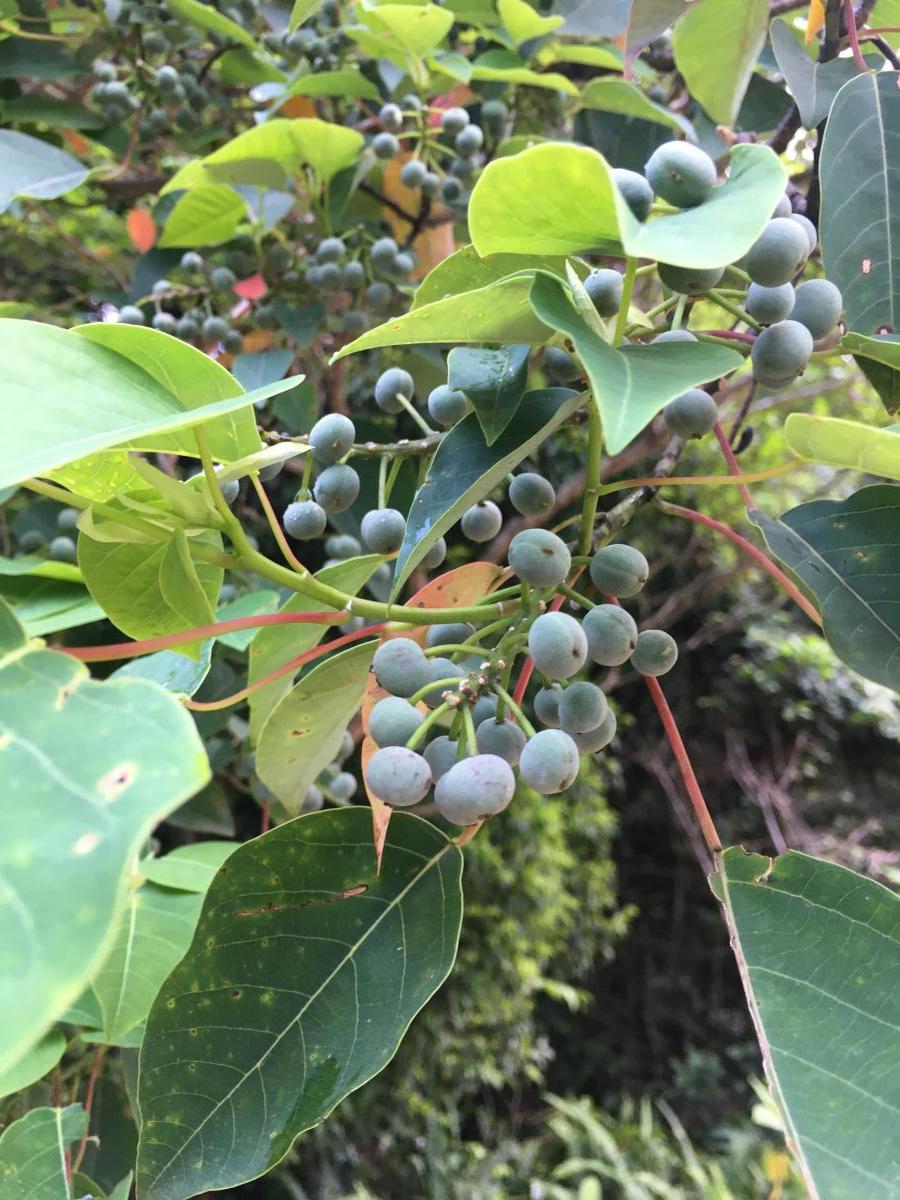
The Bleeding Heart is also the host tree for the Hercules Moth, which is the largest moth in the World.
For more information on this species see the Rainforest Tree of the Month (September 2018).
4. ![]() Northern Silky Oak (Cardwellia sublimis)
Northern Silky Oak (Cardwellia sublimis)
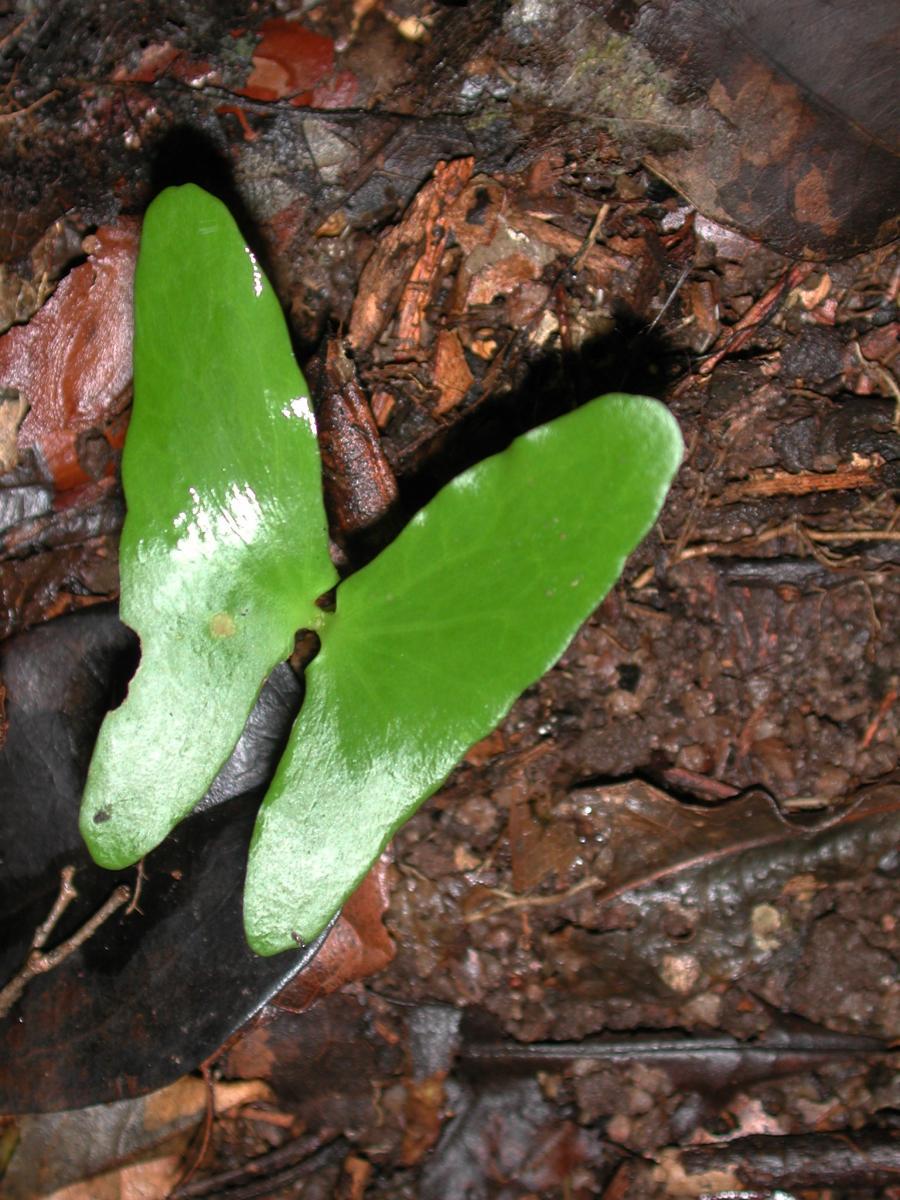
This tree is also known as the Bull Oak. Although it is quite common along the forest paths, the trunk is not particularly distinctive, so it is most commonly identified from the carpet of “butterfly seedlings” that occur near mature trees during the late wet and early dry seasons. A month or so after germination the first true leaves develop and the butterfly shape is lost. Around the village roads there are several good specimens of the Northern Silky Oak that can be identified by the large prominent seed pods.
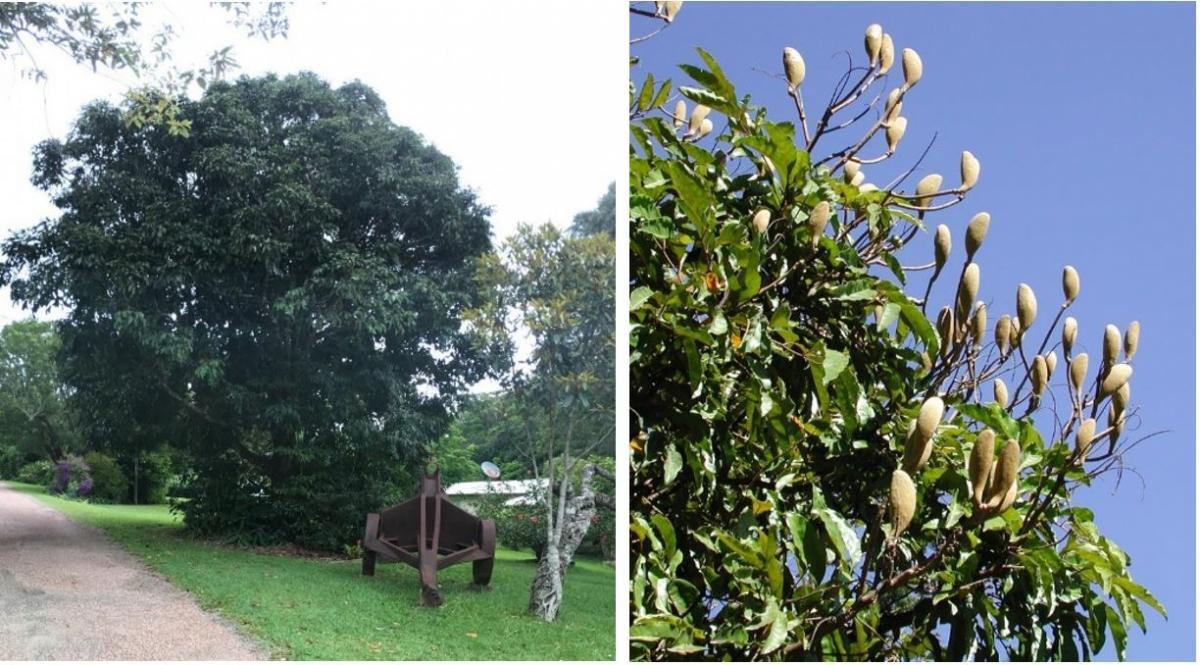
The fragrant white or cream flowers grow in terminal racemes or spikes, crowning the tree spectacularly from October to December. Then, in January, standing proud on long stems above the tree canopy, the large oval seedcases are silhouetted against the sky. The empty seed capsules are brown and woody and lie like miniature cobblestones on a bumpy pavement but they quickly decompose back into the soil.
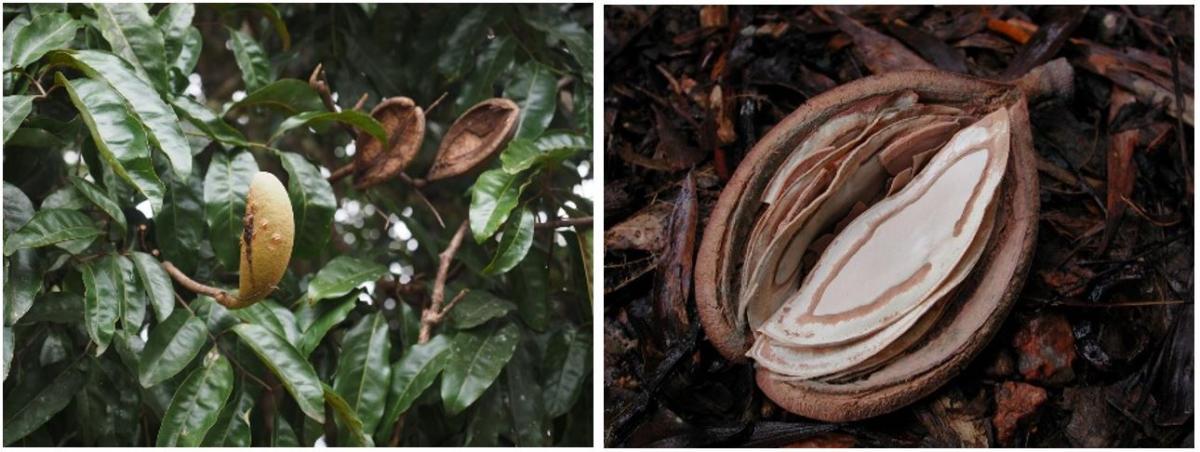
The dark, oak-like timber of this tree is highly regarded and sought after for furniture and cabinet making. It once made up 15% of all timber production in the area.
For more information on this species see the Rainforest Tree of the Month (March 2020).
5. Pimply Ash (Balanops australiana)
__K._Townsend.jpg?bwg=1588904726)
This species is one of the larger common trees along the rainforest tracks, with a round symmetrical trunk whose diameter can exceed 1 metre in mature specimens. It can be identified by its distinctive trunk, which is covered in pale “pimples” or lenticels. Larger trees also have distinctive raised, round, sinuous roots extending out several metres from the trunk.
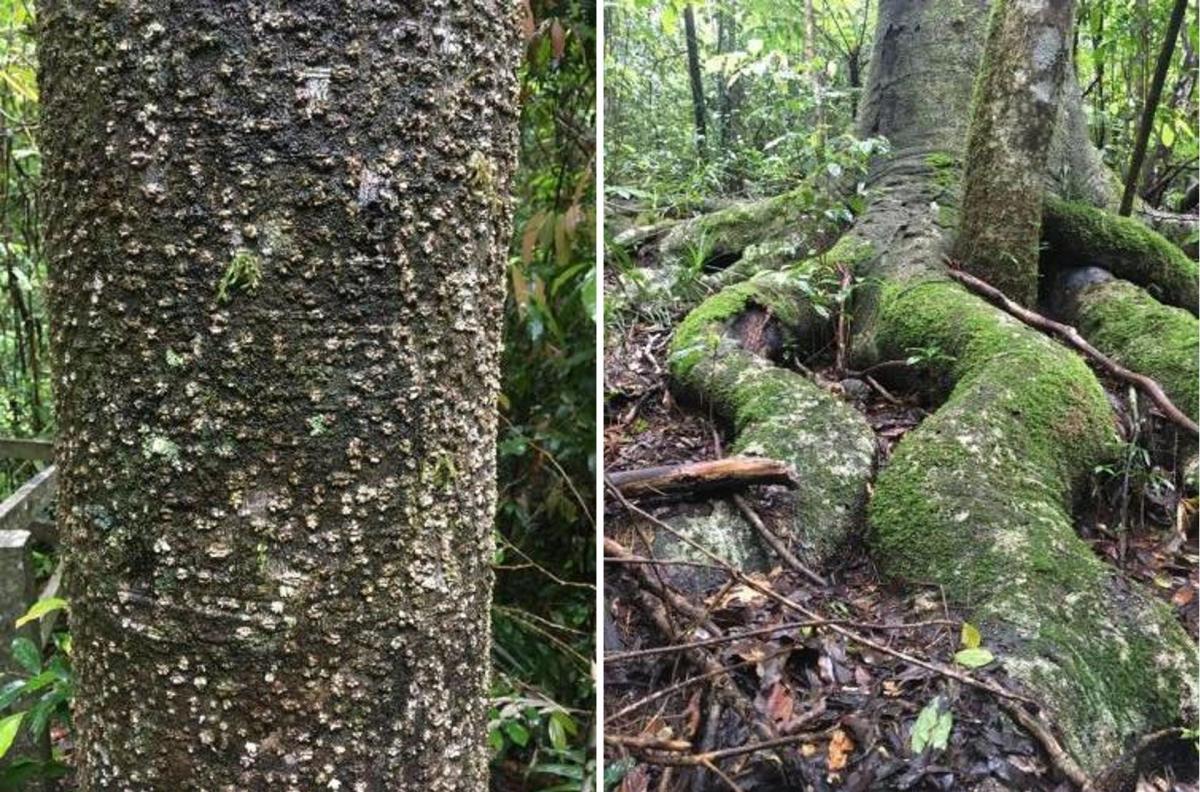
All species in this genus have separate sexes with individual trees being either male or female. The orange fruit on female trees are small, solitary and oval. They are eaten by pigeons.
